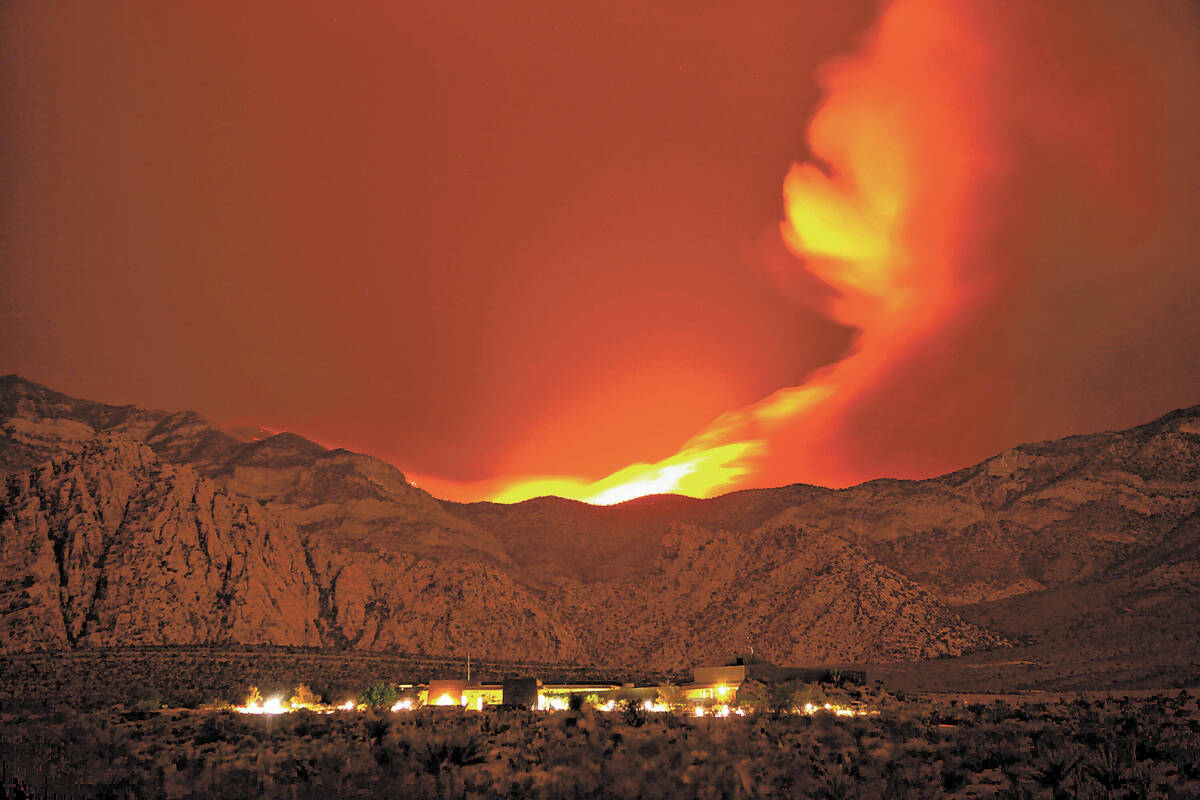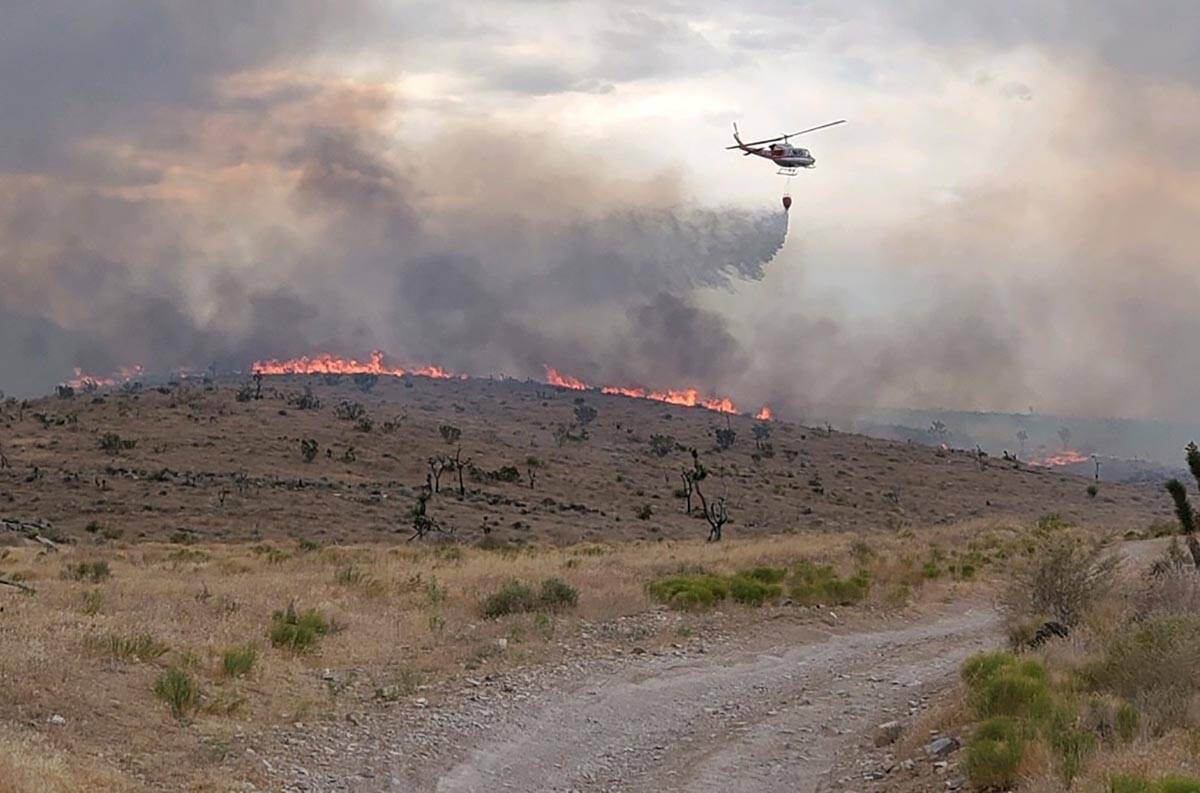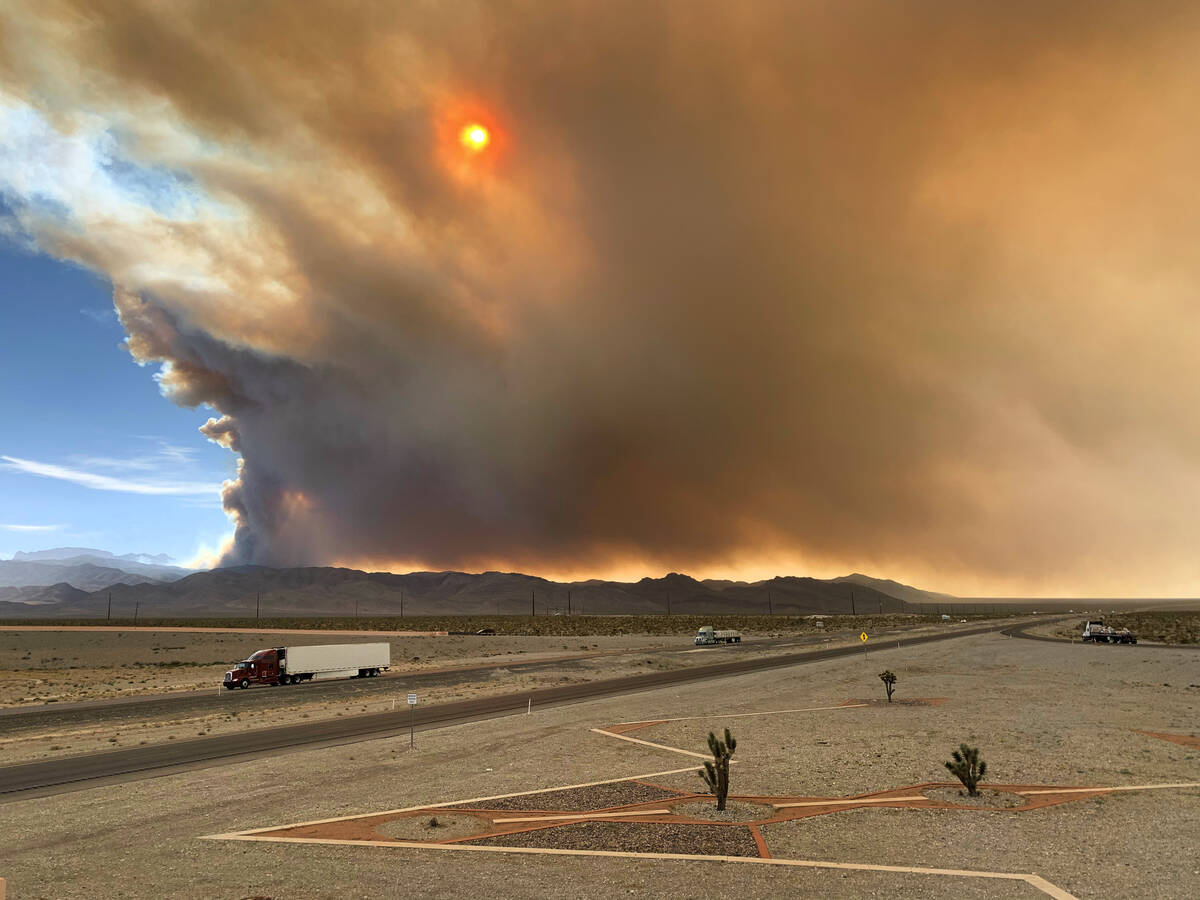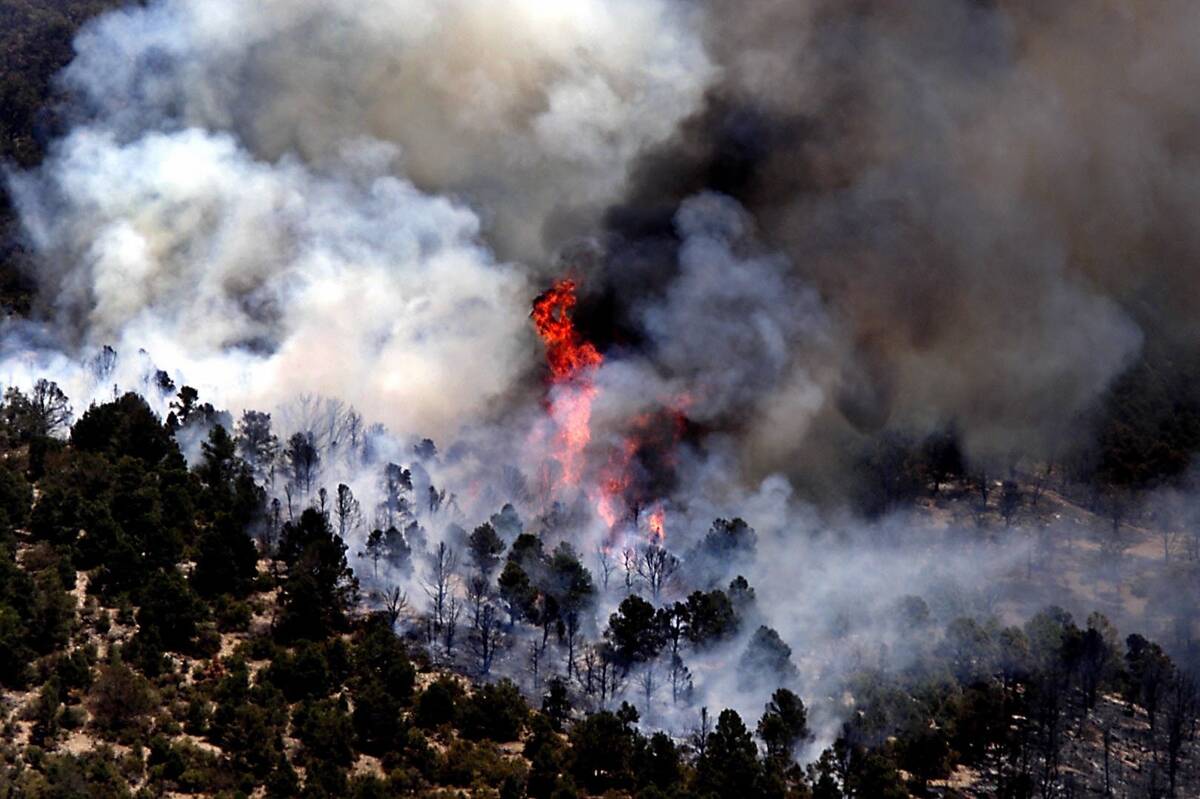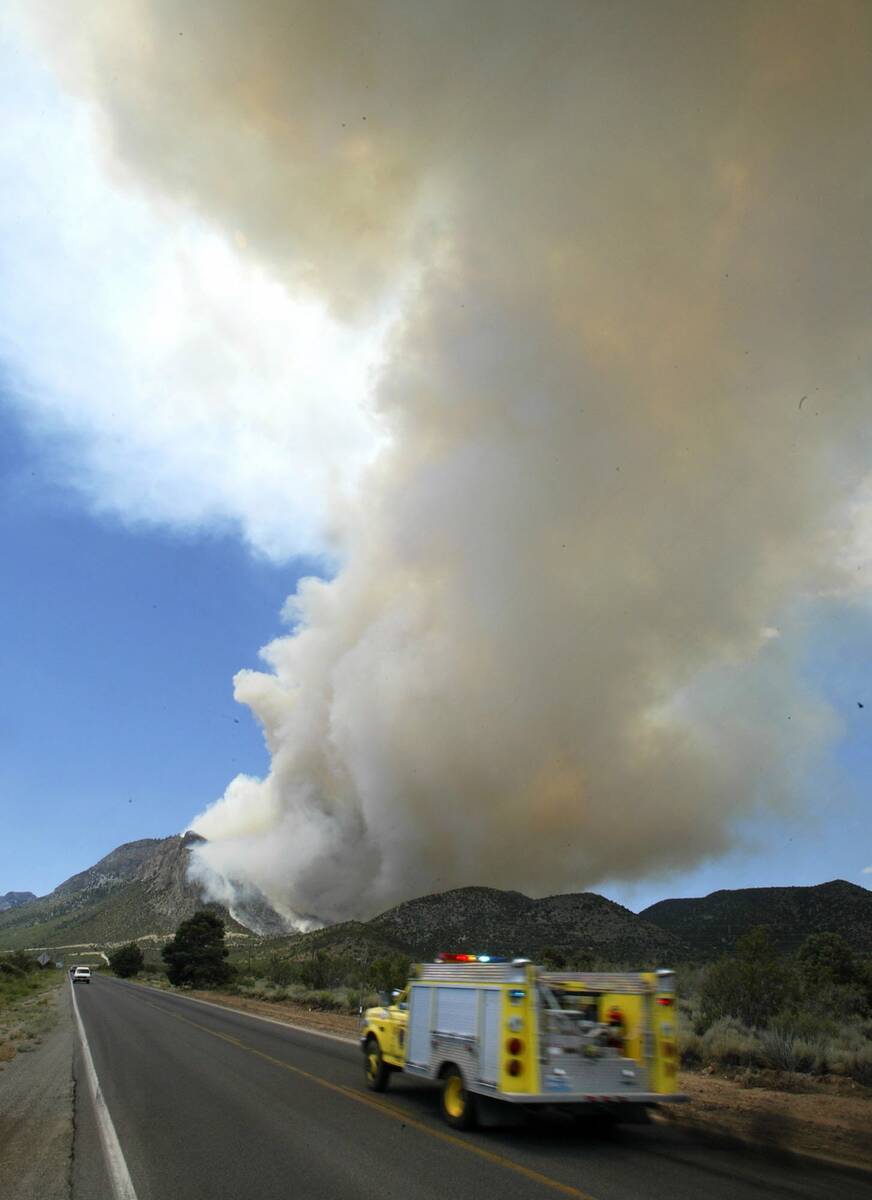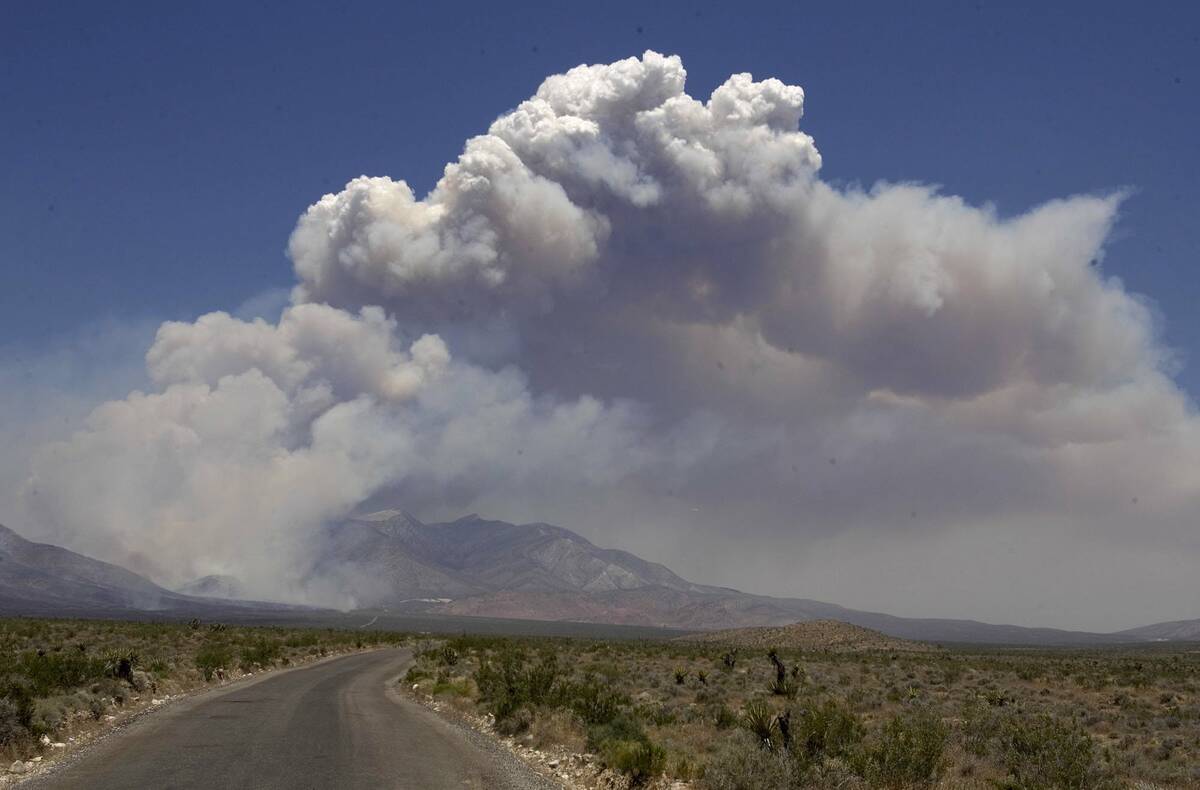Here’s how wildfire season is delayed due to wet winter
Southern Nevada’s wet winter has delayed the typical start of peak wildfire season, but fire prevention experts are preparing like any other year.
Joshua Thalacker, a fuel specialist with the U.S. Forest Service, said this week that the typical peak of fire season starts in July and runs through August and September, in conjunction with monsoon season.
“This year we got a ton of moisture so the weather is setting us back and it seems like we’re about a month behind in the fuel conditions,” Thalacker said.
Ray Johnson, a Forest Service fire prevention officer, said this year’s conditions reminded him of 2005’s fire season, which were also preceded by heavy snow. Heavy precipitation makes it harder for trees at higher elevations to burn, but it also leads to more grass at lower elevations, which can fuel fires.
History of wildfires in the region
In 2005, the Goodsprings fire — which started on Mount Potosi — and the Southern Nevada Complex fire near Mesquite were the largest among several wildfires that year.
Goodsprings burned about 33,000 acres, and the Complex fire saw two fires combine to burn about 500,000 acres.
But Johnson said that even if conditions are ripe for fires, that is not a guarantee for a busy year.
Every year, the Forest Service conducts fuel reduction to thin the forest in areas near communities to make it safer for firefighters and residents. Having less fuel in a fire’s path is a way to make sure it doesn’t get out of hand. During the 28,000-acre Carpenter 1 fire in 2013, Thalacker said preemptive fuel reduction efforts between the forest and homes near Rainbow Canyon proved vital.
“That’s what saved the houses from burning,” Thalacker said. “Otherwise if that wasn’t there it could have been a different story.”
Johnson said most fires the agency responds to are caused by lightning strikes in remote areas.
“If lightning hits a tree or whatever that’s burning, lots of times we don’t know, we can’t see it, we can’t get to it,” Johnson said. “So it can get established but we don’t know it’s happening.”
Fires that start in the Spring Mountains National Recreation Area also don’t typically cause air quality issues for the Las Vegas Valley, according to Johnson. He said it’s wildfires from neighboring states like California, whose smoke makes its way east.
Smoke from Southern California wildfires in the Angeles, San Bernardino and Los Padres national forests can be carried on wind and impact the Las Vegas Valley for what can sometimes be an extended period of time.
Wildfire prevention tips
Johnson said at higher elevations, lightning is most common cause of wildfires, but at lower elevations it’s people. Unlike with lightning strikes, people can prevent wildfires. Some tips to keep in mind include:
— Campfire restrictions: Campfires must be made in developed campgrounds only.
— Vehicle safety: Off-road vehicles should be fitted with spark arresters. Drivers of all other vehicle should stay on marked roads and not drive off road, especially if there’s grass. He said exhaust, hot brakes and catalytic converters can spark a fire.
— Target shooting: Even a tiny spark from shooting can ignite a fire. An afternoon wind can move a spark to a grassy area and start a wildfire.
— Fireworks: No fireworks of any kind are ever allowed on federal lands. Even Safe and Sane fireworks sold in Las Vegas cannot be used on federal lands.
“We still want people to come out and enjoy the public lands, but just do it responsibly,” Thalacker said.
Contact David Wilson at dwilson@reviewjournal.com. Follow @davidwilson_RJ on Twitter.
Recent Southern Nevada fires
2000 Buck Springs fire
Located in the Spring Mountains 17 miles northeast of Pahrump, the fire burned about 2,000 acres. It was sparked by the delayed effects of a lightning strike to a tree.
2002 Lost Cabin fire
The approximately 4,300-acre blaze in Lovell Canyon, about 20 miles west of Las Vegas, started after a lightning strike and threatened structures in Coal Canyon and Trout Canyon.
2004 Robbers' fire
The 290-acre fire was the worst on Mount Charleston since 1981. No structures were destroyed but led to evacuations of residents and the Spring Mountain Youth Camp.
2020 Mahogony and Cottonwood fires
A campfire that was started in the woods near the Mahogany Grove campsite caused a 2,758-acre fire on Mount Charleston.
A lightning strike between State Route 160 and Goodsprings caused a 2,800-acre fire southwest of Las Vegas.



